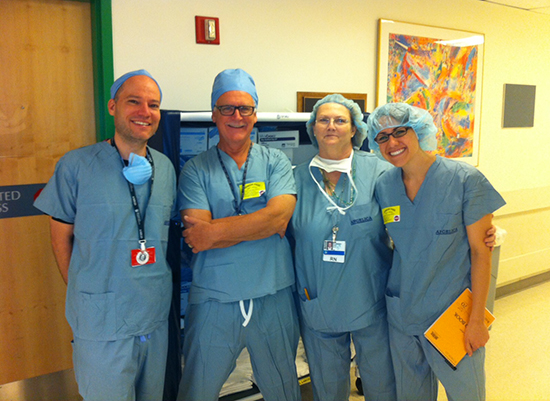
I had the privilege of watching a robotic surgery two weeks ago as a part of my project at Brigham & Women’s Hospital. While in the operating room I was able to experience firsthand the equipment set up, cable layout and requirements, and surgical atmosphere. It was fascinating to watch the surgery team work together to position the instruments, cameras and monitors, not to mention the large robot. The process for a robotic surgery is somewhat different than a conventional surgery, though many of the main components remain the same. The primary differences in this type of operation are the use of a robotic console, a vision cart, which displays a video of the surgery, and the robot, which is controlled through the console by the surgeon. At teaching hospitals a second console is commonly added for use by the resident surgeon.
For operating room projects our team of designers and architects rely on the direction and instruction from teams of nurses, doctors, surgeons and hospital administrators to inform the clinical aspects of our design and planning. Much of the clinical information we receive is often very detailed and specific and may include information about how surgical equipment is used at each point in the procedure or the circulation patterns required for different types of surgery. Distilling all of the information for a design requires, at minimum, a general understanding of surgical procedures and equipment, nursing practices and patient flow in and out of the operating room.

In the case of robotic surgery, the bulk of the robot, combined with the additional equipment required to support and operate the robot, tend to drive the planning process. What I found particularly interesting about watching the surgery was also personally seeing how many people are required in the room at any given time. With the many pieces of equipment and all of their cables and plugs, combined with the need to maintain a sterile field, this adds up to a lot of space required for easy circulation and access.
If a picture is worth a thousand words, an in-person experience is worth one hundred thousand. I am grateful for the opportunity to observe the surgery and hope that it will only make me a better communicator and designer for this and future projects.


